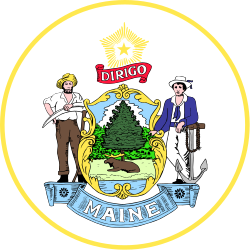| |||||||||||||||||
| |||||||||||||||||
 County results Muskie: 50–60% 60–70% Payne: 50–60% | |||||||||||||||||
| |||||||||||||||||
| Elections in Maine |
|---|
 |
The 1958 United States Senate election in Maine was held on September 8, 1958 to elect a United States senator. Incumbent Republican Senator Frederick G. Payne lost re-election to a second term.
Contents
- Republican primary
- Candidates
- Results
- Democratic primary
- Candidates 2
- Results 2
- General election
- Results 3
- See also
- References
Senator Frederick Payne was defeated in his bid for a second term by a wide margin. This was one of a record 15 seats Democrats gained from the Republican Party. This was the first time Democrats won a Senate race in Maine since the 1910 election for this seat, thus this was the first time a Democrat was popularly elected to the Senate from Maine.

